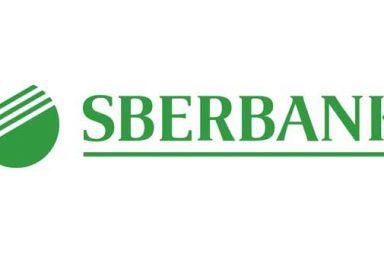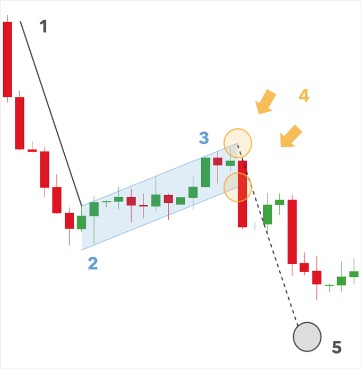Contents:


It is formed by the two converging and ascending lines of support and resistance. If the Ascending Wedge forms on the maximums of a price chart in an uptrend, it signals a probable reversal or correction. Upon a breakaway of the lower border of the Wedge, selling is recommended with a Stop Loss above the closest maximum of the Wedge and the execution sized as the H base . A falling wedge pattern will consist of progressively lower highs on the upper trend line resistance level of the pattern. The downward slope of the resistance line can look exactly like the downward slope of the resistance line of a descending triangle.
A falling wedge can be part of a general market reversal and a continuation trend. In the case of a reversal trend, the wedge will start to form at the bottom point of a bearish trend in the market. Once the wedge lines converge and begin reaching their apex or possible convergence point, there should be a break to the upside. Traders can make use of falling wedge technical analysis to spot reversals in the market.
This indicates that the buyers are gathering strength and biding their time until there is a possible break to the upside. The descending wedge pattern appears within an uptrend when price tends to consolidate, or trade in a more sideways fashion. The rising wedge pattern is the opposite of the falling wedge and is observed in down trending markets. Traders ought to know the differences between the rising and falling wedge patterns in order to identify and trade them effectively.
Learn how to trade forex in a fun and easy-to-understand format. When price falls off the upper trendline, and doesn’t reach the lower trendline before rising back to the upper trendline. With the Descending Broadening Wedge formation we are looking for two touches to each trendline. The Descending Broadening Wedge is similar to the Ascending Broadening Wedge pattern and the descending variety of wedge broadens downwards. It is understood that institutional traders always capture the stop losses of retail traders. They will buy when you sell a currency or asset, and they will sell when you buy a currency or an asset.
Stop losses are usually set on retracement back inside the… Wedge Patterns are a type of chart pattern that is formed by converging two trend lines. Wedge patterns can indicate both continuation of the trend as well as reversal.
Trading Advantages for Wedge Patterns
We are new here so we ask you to support our views with your likes and comments, Feel free to ask any questions in the comments, and we’ll try to answer them all, folks. The descending wedge is a bullish chart pattern that begins with a wide trading range at the top and contracts to a smaller trading range as prices trend down. Gold price chart by TradingViewThe price broke the resistance line of the formation at the $900 price level. Then, it continued rising by making bullish continuation patterns such as ABCD patterns. Figure 6 shows the final result after the target is reached. Although the index continued to move lower, we exited the position and started looking for other rising wedge patterns.
This method provides a logical, https://g-markets.net/-based profit target that reflects the pattern’s volatility. Traders can also use other technical analysis tools, such as support and resistance levels or Fibonacci extensions, to refine their profit target and align it with key market levels. The falling wedge pattern is characterized by a chart pattern which forms when the market makes lower lows and lower highs with a contracting range. When this pattern is found in a downward trend, it is considered a reversal pattern, as the contraction of the range indicates the downtrend is losing steam. A falling wedge chart pattern consists of both the top resistance line and the bottom support line sloping downward. However, the slope of the line of resistance at the top will be at a sharper downward angle than the support line at the bottom.
Falling wedge in a reversal trend
In trading, a bearish pattern is a technical chart pattern that indicates a potential trend reversal from an uptrend to a downtrend. These patterns are characterized by a series of price movements that signal a bearish sentiment among traders. 📍Bear Flag 🔸 A small rectangular pattern that slopes against the preceding trend 🔸 Forms after a rapid price decline…
Some studies suggest that a descending wedge pattern pattern will breakout towards a reversal more often than two-thirds of the time, with a falling wedge being a more reliable indicator than a rising wedge. A descending broadening wedge is a bullish continuation formation and appears in the middle of an uptrend. And this pattern completes when the price breaks the resistance line. An ascending triangle is a chart pattern used in technical analysis created by a horizontal and rising trendline. The pattern is considered a continuation pattern, with the breakout from the pattern typically occurring in the direction of the overall trend.
New cheat sheet template on Reversal patterns and continuation patterns. I have also included must follow rules and how to use the BT Dashboard. These patterns have an unusually good track record for forecasting price reversals.
What Is a Wedge and What Are Falling and Rising Wedge Patterns?
After a breakaway of the lower border of the Wedge selling is recommended, a Stop Loss is placed above the closest maximum, execution is sized as the H base of the Wedge . Let’s review how traders would respond to a falling wedge pattern. In the trading battle between buyers and sellers, the falling wedge indicates a period of time when the buyers are gathering strength and waiting to make a push to the upside. Momentum is running out for the sellers , and thus the bottom support line is indeed affected by its downward trajectory. But not as much as if the sellers had a significant advantage.
- https://g-markets.net/wp-content/uploads/2021/04/Joe-Rieth.jpg
- https://g-markets.net/wp-content/uploads/2021/09/image-wZzqkX7g2OcQRKJU.jpeg
- https://g-markets.net/wp-content/uploads/2020/09/g-favicon.png
In doing so, the Mexican Peso pair pokes a one-week-old descending resistance line while staying inside a fortnight-long falling wedge bullish chart pattern. The above example shows that from late Feb 2022 to early April, the XRP/USDT pair presented in a rising wedge pattern. The post breakdown fall reached the $0.623 mark, registering a 23.75% drop. Thus, the higher lows during the pattern formation act as a viable target for this type. A descending broadening wedge pattern is the mirror image of the ascending broadening wedge. GBPUSD chart by TradingViewOn 15 August the price broke the support line of the pattern.
Traders should always practice risk management principles and consider the broader market context when making trading decisions. Rising wedges, also known as ascending wedges, are generally considered bearish reversal patterns when they form during an uptrend. This is because the pattern indicates that the buying pressure is weakening, and a trend reversal may be imminent. However, if a rising wedge forms during a downtrend, it can act as a bullish reversal pattern, signaling a potential change from a downtrend to an uptrend. The falling wedge pattern is a continuation pattern formed when price bounces between two downward sloping, converging trendlines.
Because the market has eliminated the retail traders by big price moves against their direction. And the price is already in oversold conditions because of consecutive lower lows. Retail traders widely use chart patterns to forecast the market. Because these are natural patterns, and symmetry in these patterns makes them unique. Price cutting through a trendline doesn’t count as a touch .Volume trendTrends upward.
Downside risks remain for the Greenback? – FXStreet
Downside risks remain for the Greenback?.
Posted: Sun, 02 Apr 2023 02:15:27 GMT [source]
In the case of a falling wedge, the two trend lines will slope, but the top line will slope at a sharper angle downward than the bottom resistance line. Falling wedge patterns should also be used in combination with other forms of technical analysis and due diligence. Here is what needs to be present when looking for a falling wedge pattern.
What is a descending wedge pattern?
A candlestick pattern is a graphic representation of changes in price on a candlestick chart that some traders believe can predict future price movements. Bullish patterns predict increases in price, while bearish patterns indicate that the price may drop. Check out our in-depth article about how to read these charts and some other common patterns. Conservative traders may look for additional confirmation of price continuing in the direction of the breakout. The target can be estimated through the technique of measuring the height of the back of the wedge and extending it in the direction of the breakout.

When trading the ascending wedge pattern, traders can utilize different entry strategies depending on their risk tolerance and preferences. The two primary entry strategies are the breakout and pullback methods. A broadening wedge pattern is a price chart formations that widen as they develop. In other words, in a broadening wedge pattern, support and resistance lines diverge as the structure matures.
Following the swing up from the lower to the upper trendline should price close above the third touch to the upper trendline then this provides a confirmation entry point. Broadening Wedges are plentiful in price charts and can provide good risk and reward trades. The broadening aspect of them suggests increasing price volatility and increasing volume this spells out opportunity.

Rising wedges have a relatively low risk/high reward ratio and, as a result, they are a favorite among professional technical traders. There are many false patterns or patterns in disguise that may come off as rising wedges that investors be wary of. The only way to differentiate a true rising wedge from a false one is by finding price/volume divergences and to make sure that the failure is still under the 50% Fibonacci retrace.

